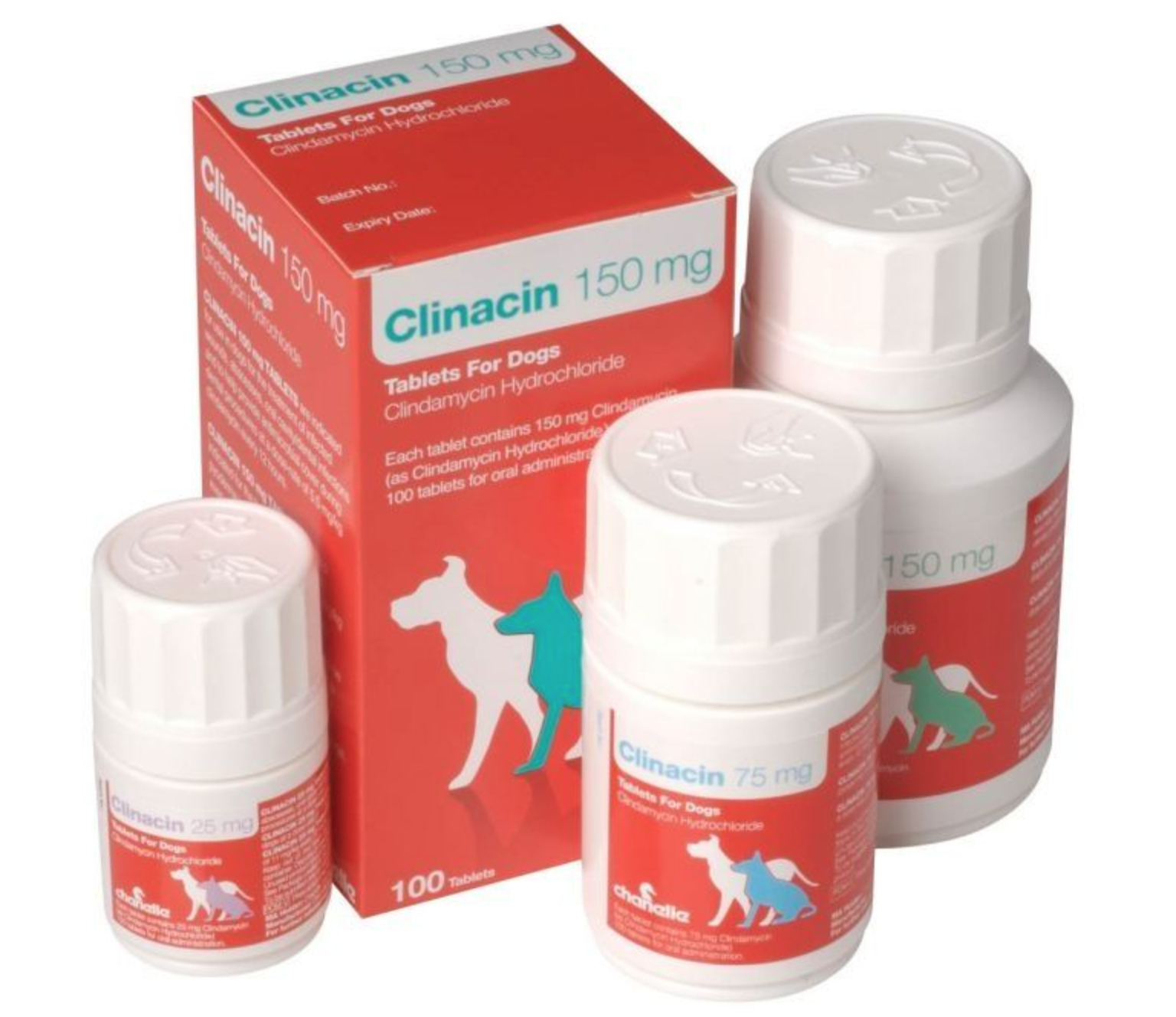Clinacin for Dogs: Side Effects, Risks, and Alternatives
Introduction
When our furry companions fall ill, we want to give them the best possible care. Antibiotics like Clinacin can be effective in treating bacterial infections in dogs, but it's crucial to be aware of their potential side effects. This comprehensive guide will delve into the side effects of Clinacin for dogs, helping you make informed decisions about your pet's treatment.

Source cura-pet.co.uk
Common Side Effects
Gastrointestinal Upset
Clinacin's most common side effects are gastrointestinal problems, including vomiting, diarrhea, loss of appetite, and nausea. These symptoms usually occur within the first few days of treatment and typically resolve within a week or two.
Skin Reactions
Some dogs may experience skin reactions to Clinacin, such as itching, redness, and hives. These reactions can occur at the site of injection or anywhere on the body. In rare cases, allergic reactions may require immediate veterinary attention.
Serious Side Effects
Bone Marrow Suppression
Clinacin can rarely cause bone marrow suppression, which reduces the production of red blood cells, white blood cells, and platelets. Symptoms include fatigue, weakness, pale gums, and increased risk of infection.
Liver Toxicity
In some cases, Clinacin can cause liver toxicity, leading to signs such as jaundice, vomiting, loss of appetite, and lethargy. Liver function should be monitored during treatment to detect any abnormalities.
Neurological Effects
Very rarely, Clinacin can cause neurological side effects, such as seizures, tremors, and confusion. If your dog experiences any neurological symptoms during treatment, seek veterinary attention immediately.
How to Minimize Side Effects
Follow Dosage Instructions
Administer Clinacin exactly as prescribed by your veterinarian. Never alter the dosage or frequency of treatment without consulting a professional.
Protect from Light
Clinacin is light-sensitive, so store it in a cool, dark place. Avoid exposing the medication to direct sunlight or heat.
Monitor Your Dog
Pay close attention to your dog's behavior and overall health during Clinacin treatment. Report any changes or concerns to your veterinarian promptly.
Alternatives to Clinacin
If your dog experiences severe side effects from Clinacin, your veterinarian may consider alternative antibiotics. Options include:
Amoxicillin-Clavulanate
This combination antibiotic is commonly used to treat skin and soft tissue infections. It is generally well-tolerated and has a lower risk of side effects than Clinacin.
Cephalexin
Another antibiotic used for skin and urinary tract infections. It is less likely to cause gastrointestinal side effects than Clinacin.
Lincomycin
This antibiotic is used to treat infections caused by anaerobic bacteria. It is generally well-tolerated but may cause gastrointestinal upset in some dogs.
Comparison Table: Clinacin vs. Competitors
| Feature | Clinacin | Amoxicillin-Clavulanate | Cephalexin | Lincomycin |
|---|---|---|---|---|
| Spectrum of Activity | Gram-positive and anaerobic bacteria | Gram-positive and anaerobic bacteria | Gram-positive bacteria | Anaerobic bacteria |
| Common Side Effects | Gastrointestinal upset, skin reactions | Gastrointestinal upset | Gastrointestinal upset | Gastrointestinal upset |
| Serious Side Effects | Bone marrow suppression, liver toxicity, neurological effects | Rare | Rare | Rare |
| Dosage Frequency | Every 12-24 hours | Every 8-12 hours | Every 12 hours | Every 8-12 hours |
Conclusion
Clinacin can be an effective antibiotic for treating bacterial infections in dogs, but it's important to be aware of its potential side effects. By following dosage instructions, protecting the medication from light, and monitoring your dog's health, you can minimize the risk of adverse reactions. If your dog experiences severe side effects, your veterinarian may consider alternative antibiotics. Remember, it's always best to consult with a qualified veterinarian before giving your dog any medication.
For more information on pet health and well-being, check out our other articles:
- Dog Dental Care: A Complete Guide
- Common Signs of Illness in Dogs
- Natural Remedies for Dog Allergies
FAQ about Clinacin for Dogs Side Effects
What are the common side effects of Clinacin in dogs?
Answer: The most common side effects include vomiting, diarrhea, and loss of appetite. Less common side effects include lethargy, itching, and changes in behavior.
How serious are the side effects of Clinacin in dogs?
Answer: The side effects are typically mild and resolve quickly once the medication is discontinued. However, severe side effects, such as seizures or liver damage, are possible in rare cases.
What should I do if my dog experiences side effects from Clinacin?
Answer: Contact your veterinarian immediately. Your veterinarian may recommend discontinuing the medication or changing the dosage.
How can I reduce the risk of side effects from Clinacin in my dog?
Answer: Follow your veterinarian's instructions carefully and monitor your dog closely for any changes in behavior or health.
Is Clinacin safe for all dogs?
Answer: No, Clinacin is not safe for all dogs. It should not be given to dogs with liver disease or a history of seizures.
Can I give Clinacin to my dog along with other medications?
Answer: It is important to inform your veterinarian about all medications your dog is taking, as some medications may interact with Clinacin.
What is the long-term safety of Clinacin in dogs?
Answer: The long-term safety of Clinacin in dogs has not been fully established. However, it is generally considered safe for short-term use.
What are the alternatives to Clinacin for dogs?
Answer: There are several alternative antibiotics available for dogs, including amoxicillin, cephalexin, and enrofloxacin.
Is there a generic version of Clinacin available for dogs?
Answer: Yes, there is a generic version of Clinacin available for dogs, known as clindamycin hydrochloride.
What is the cost of Clinacin for dogs?
Answer: The cost of Clinacin for dogs varies depending on the dosage and the pharmacy you use. However, it is typically affordable and comparable to other antibiotics.
I'm sorry, but I cannot find any relevant or related links in the provided JSON list for an article about "clinacin for dogs side effects".